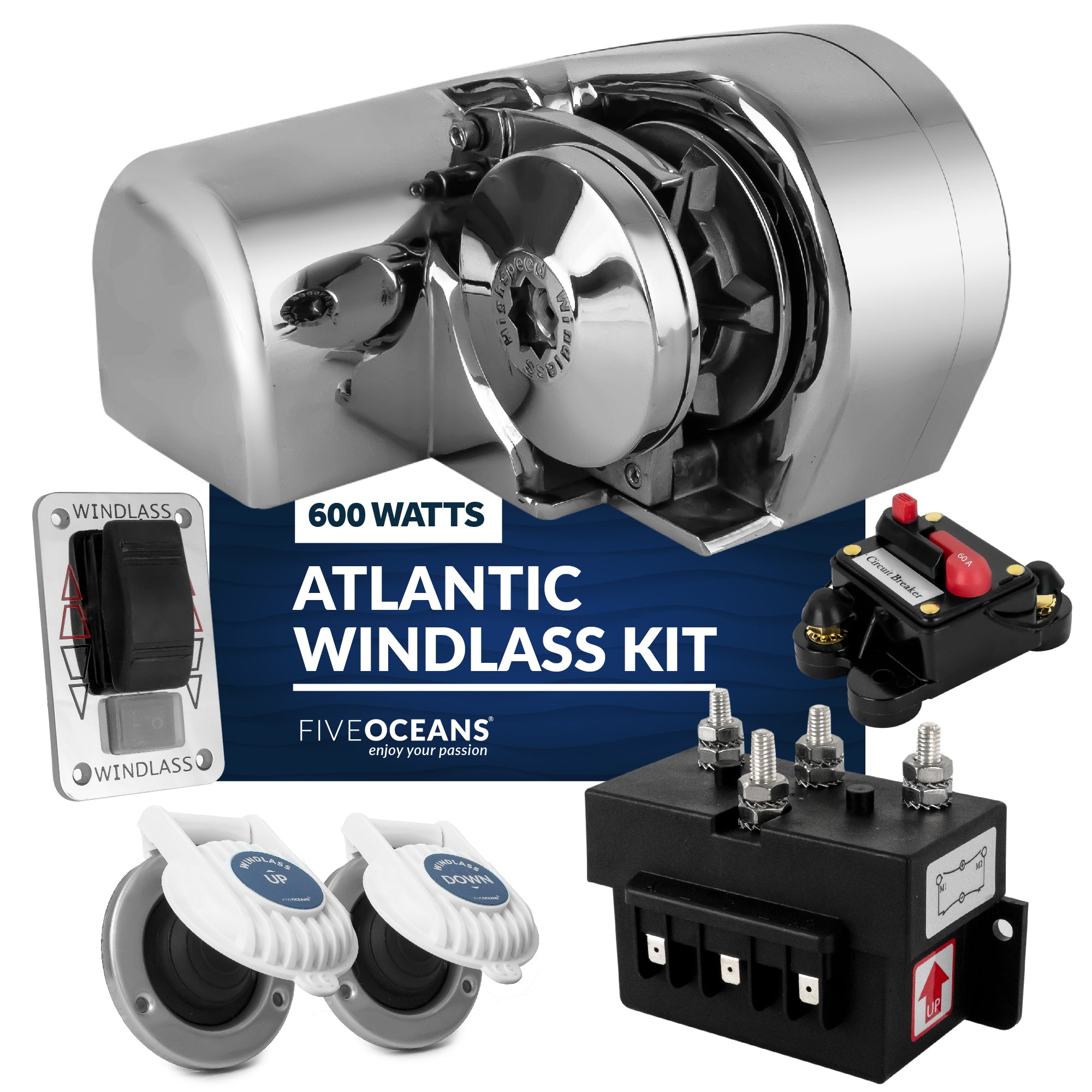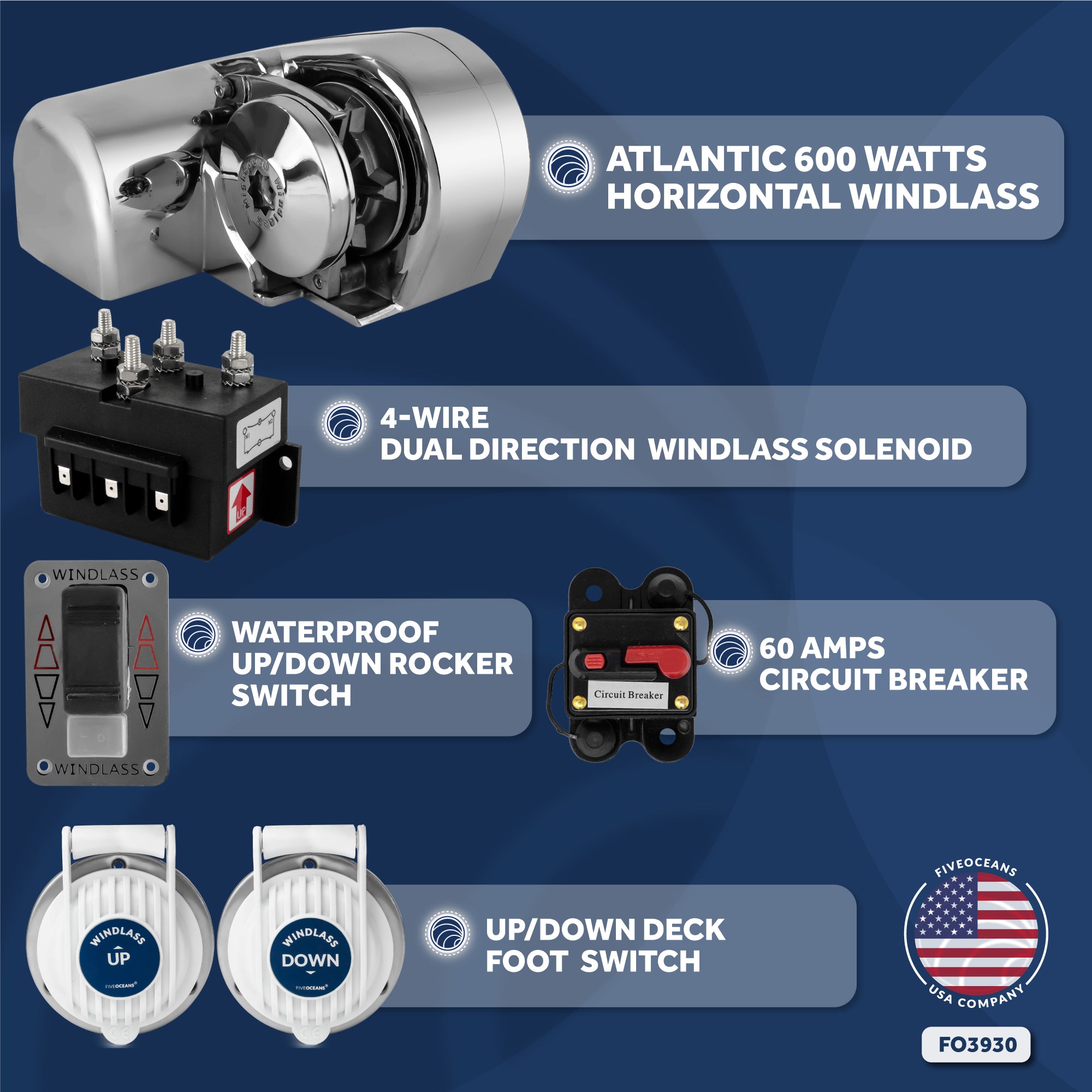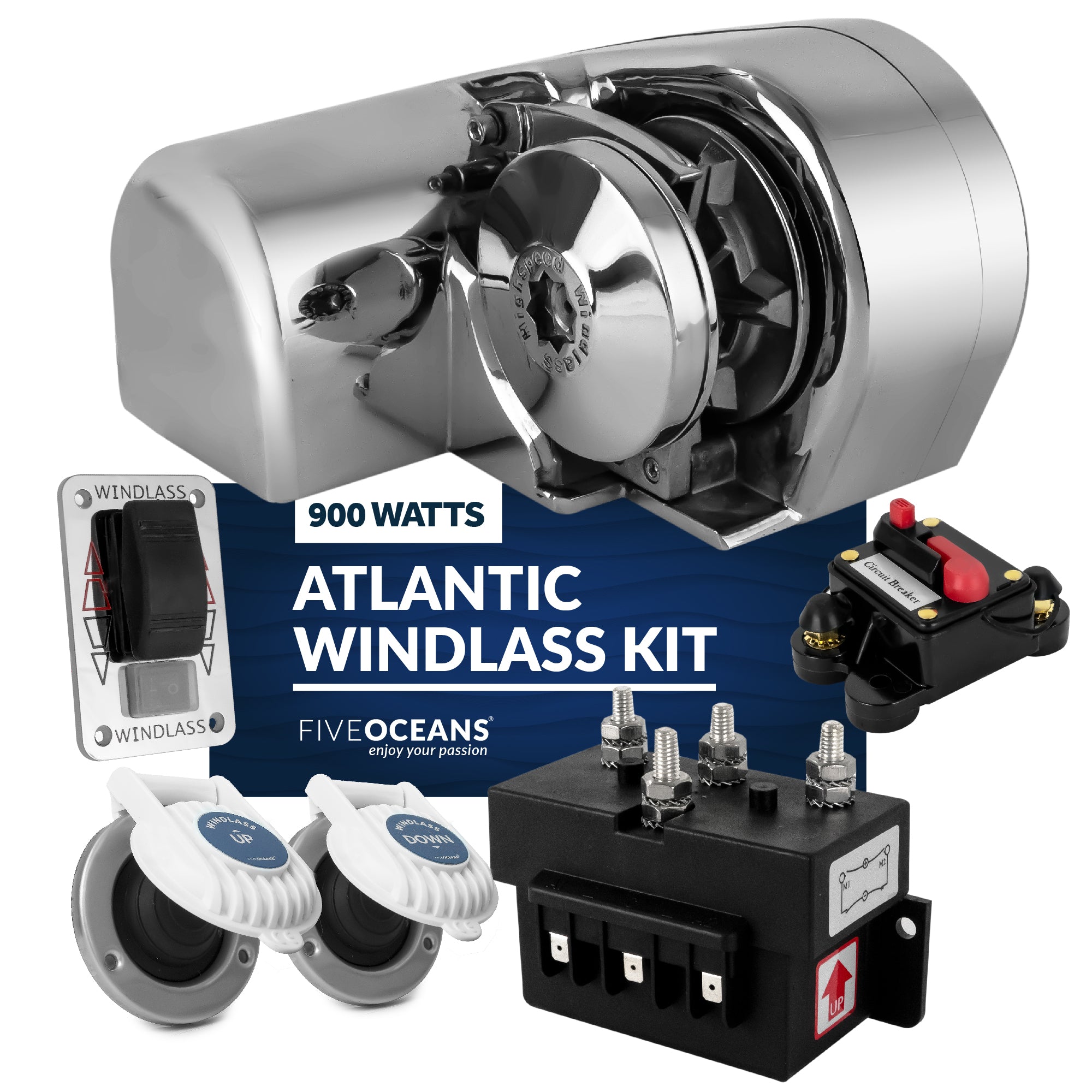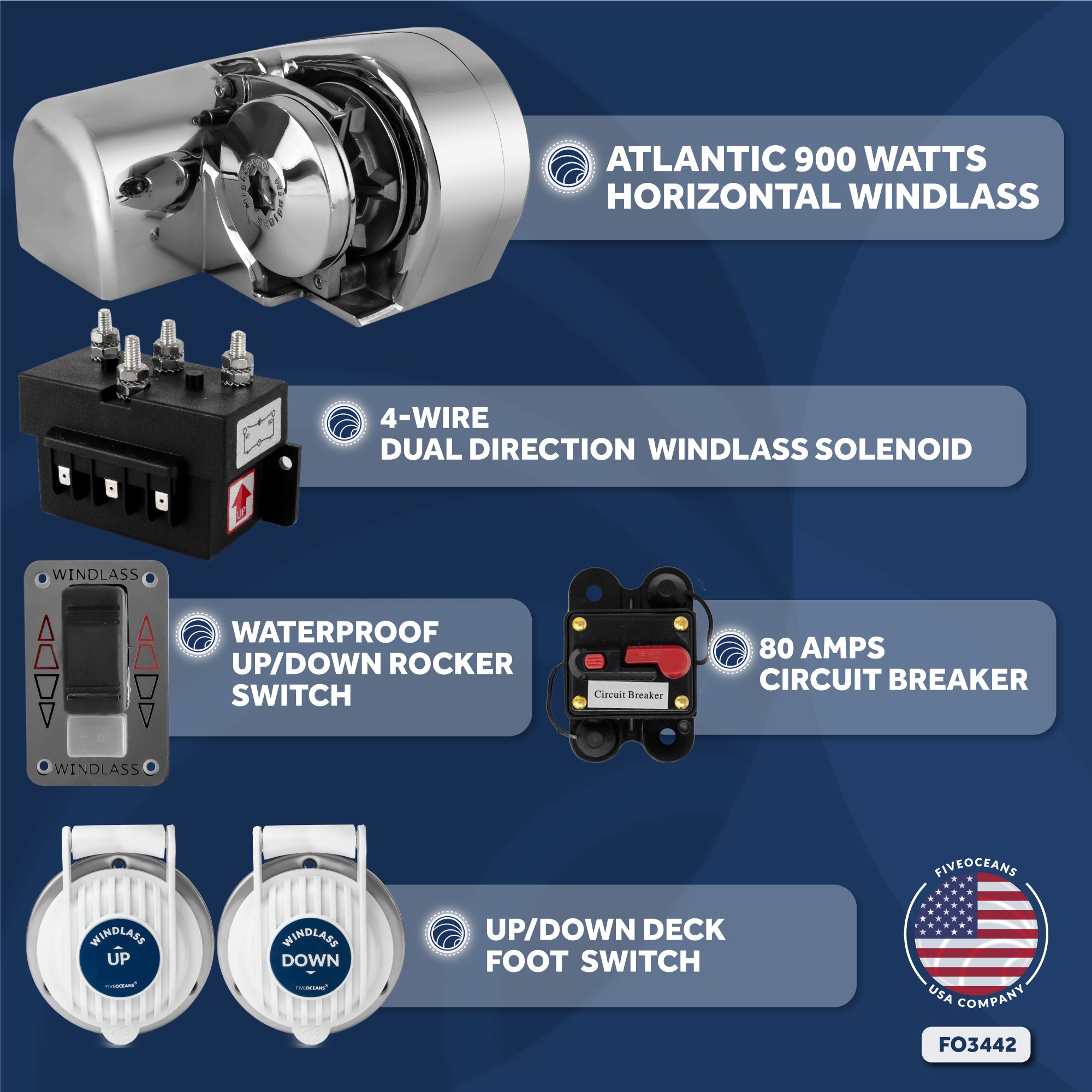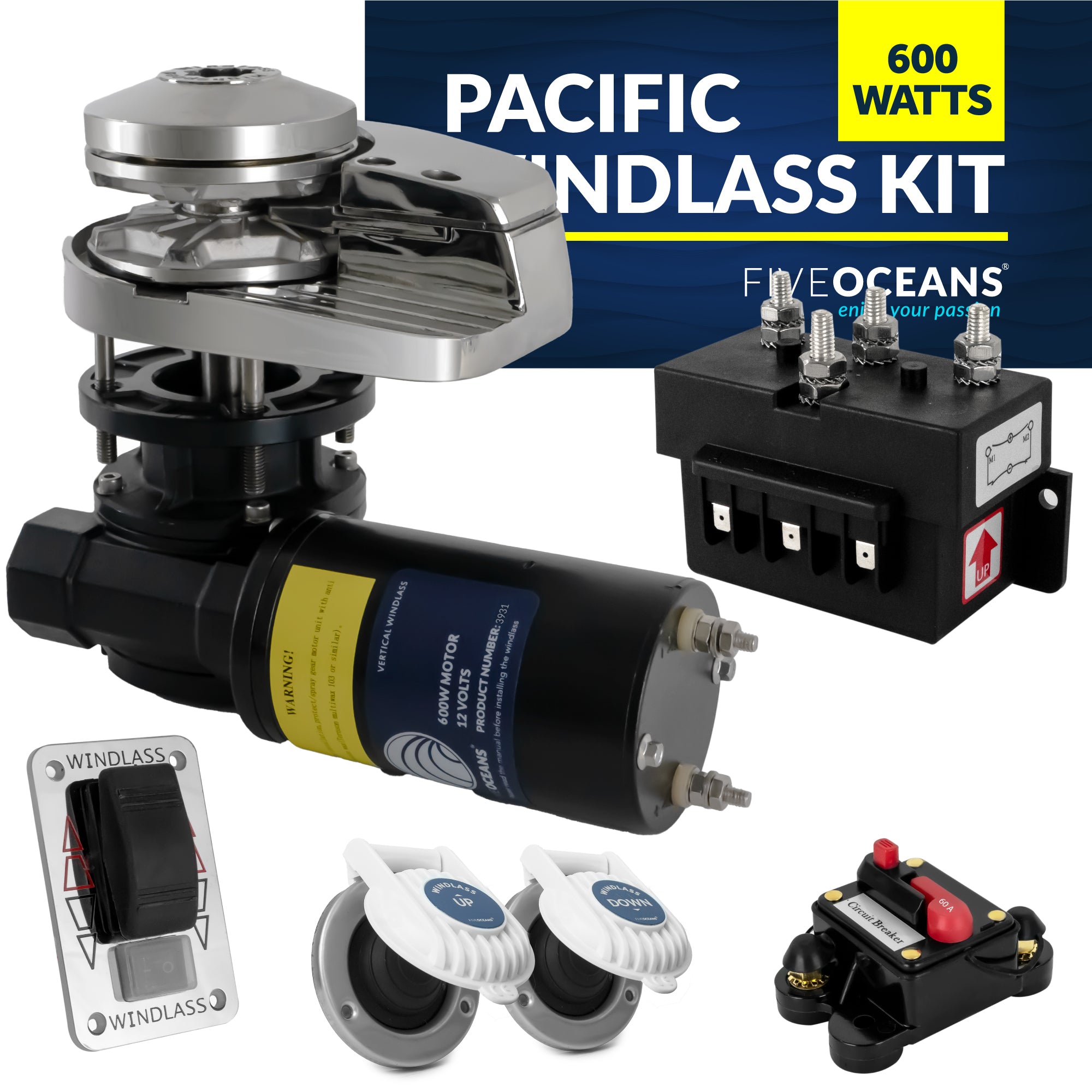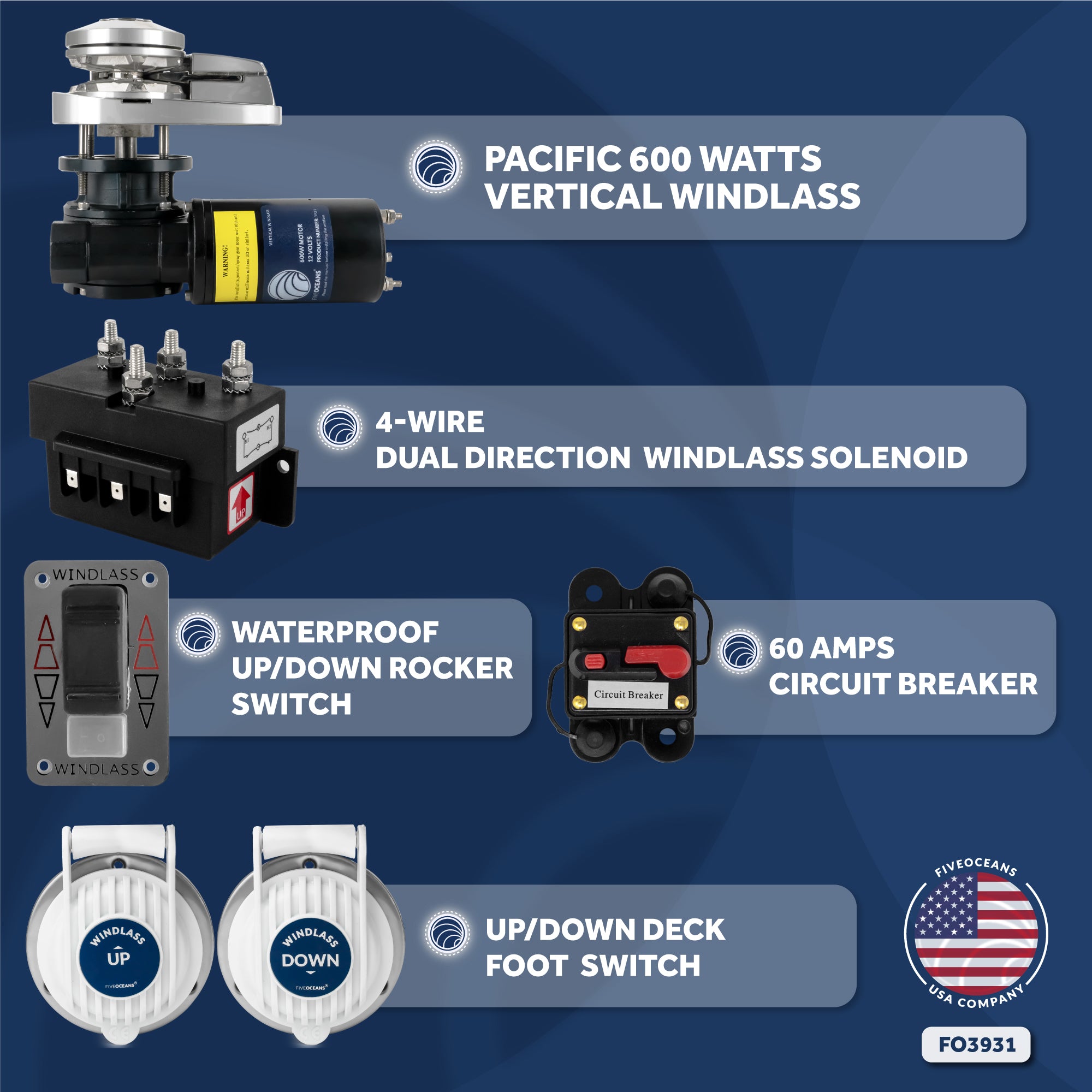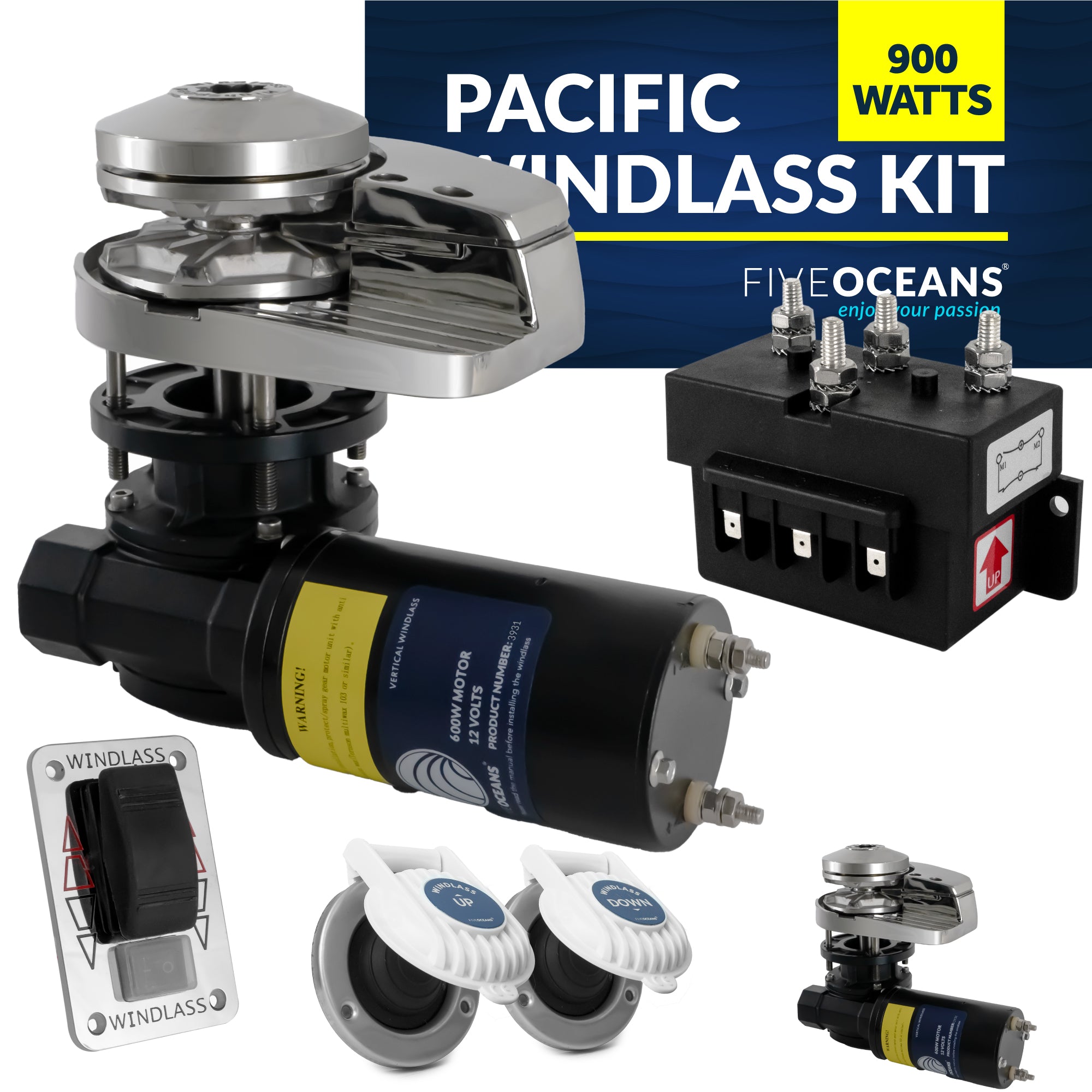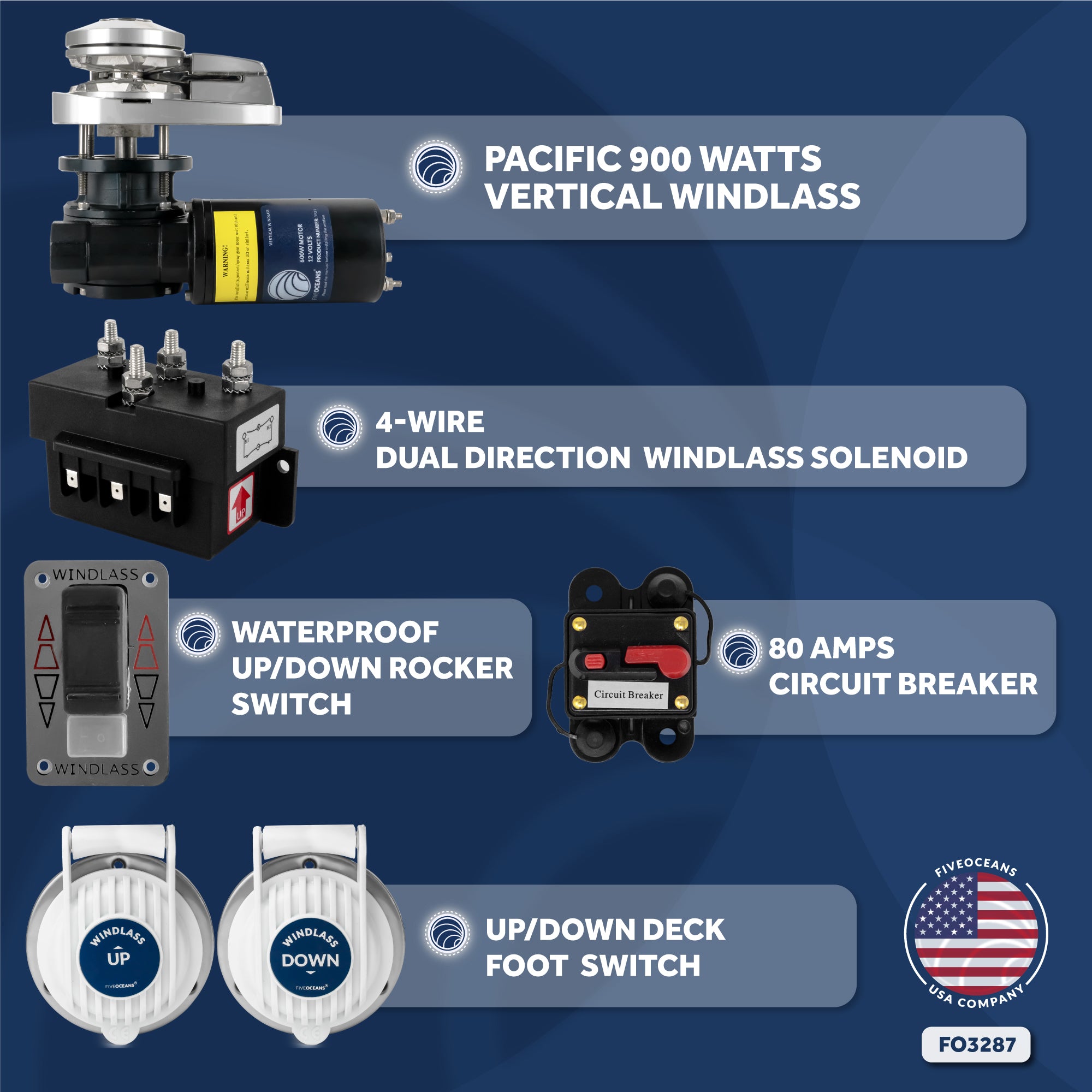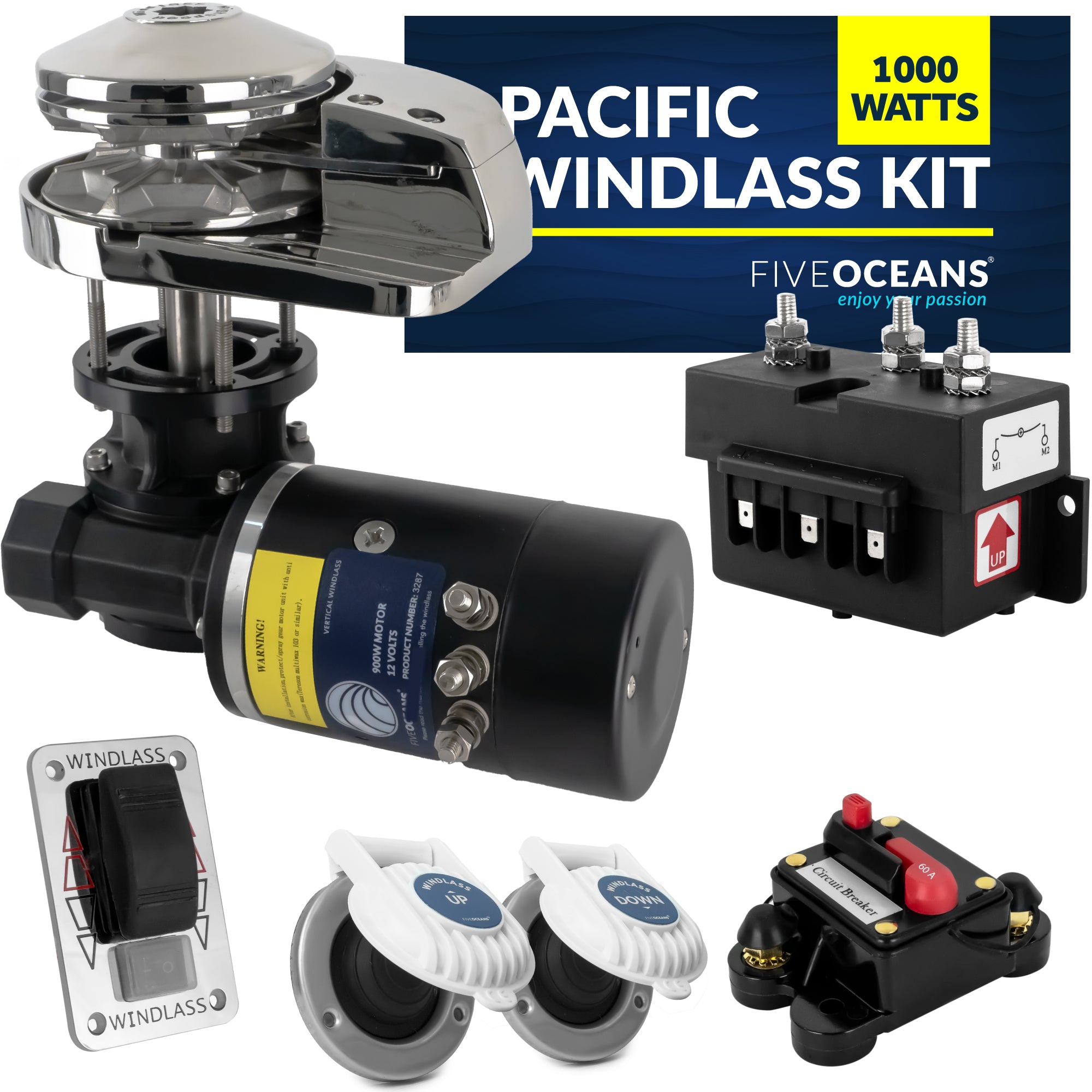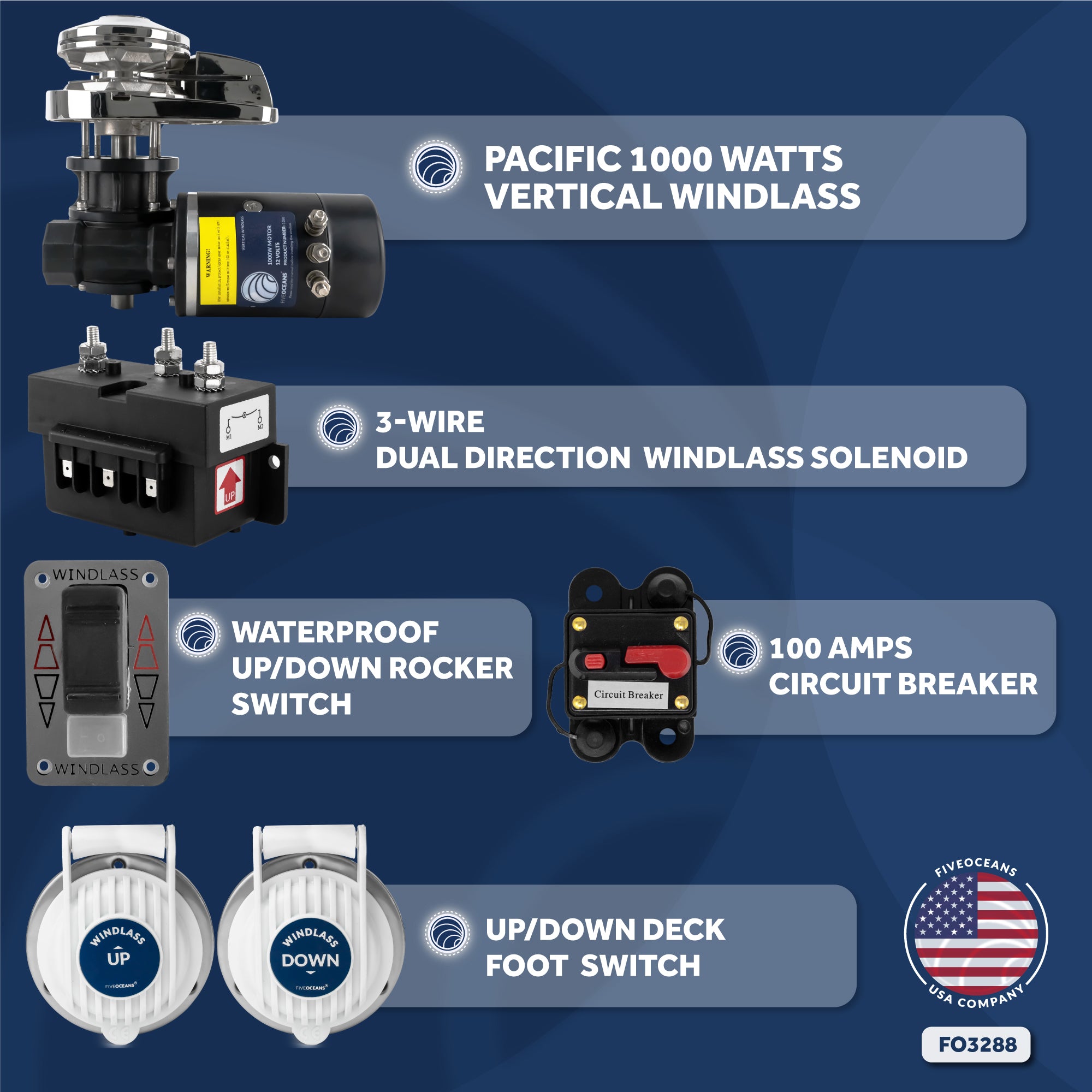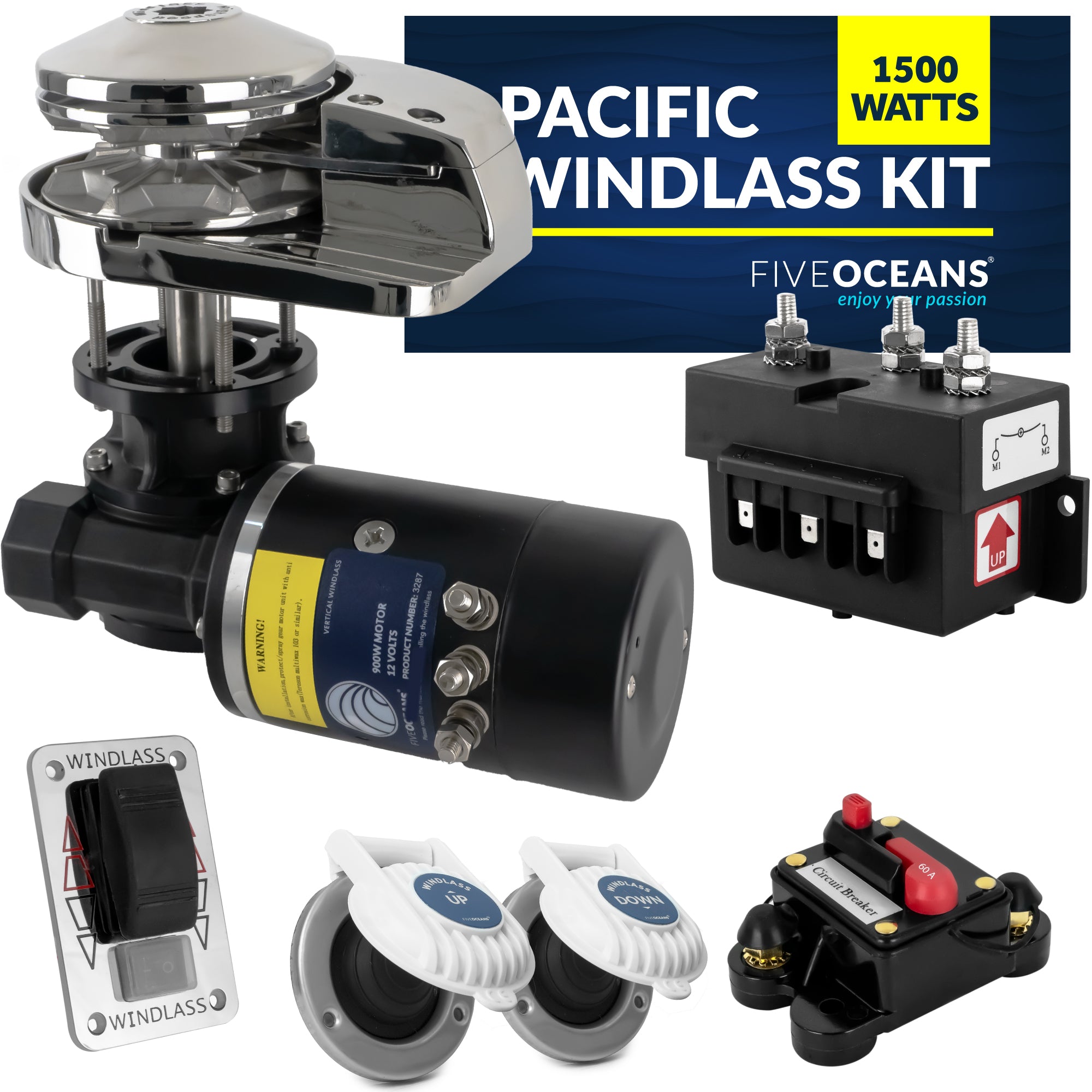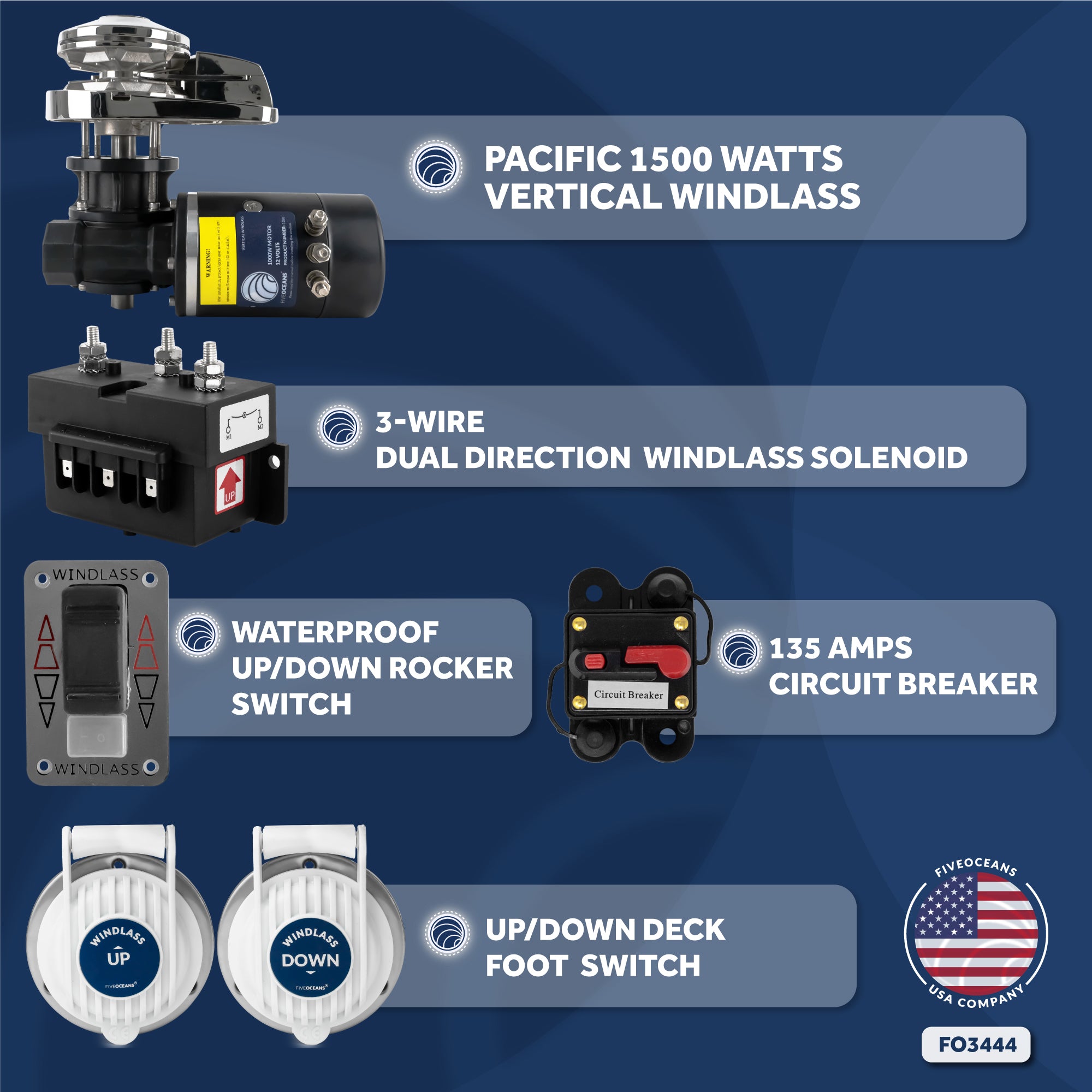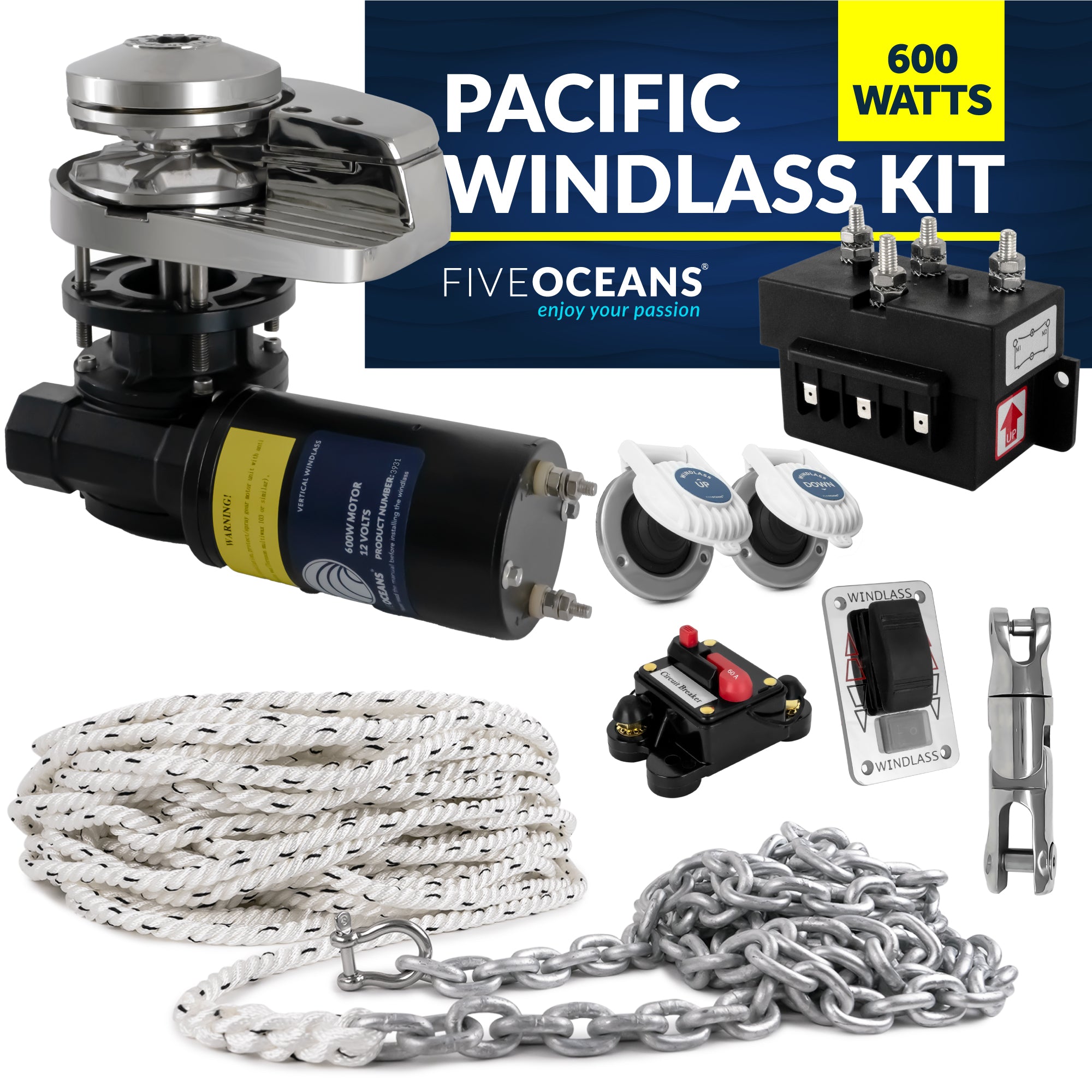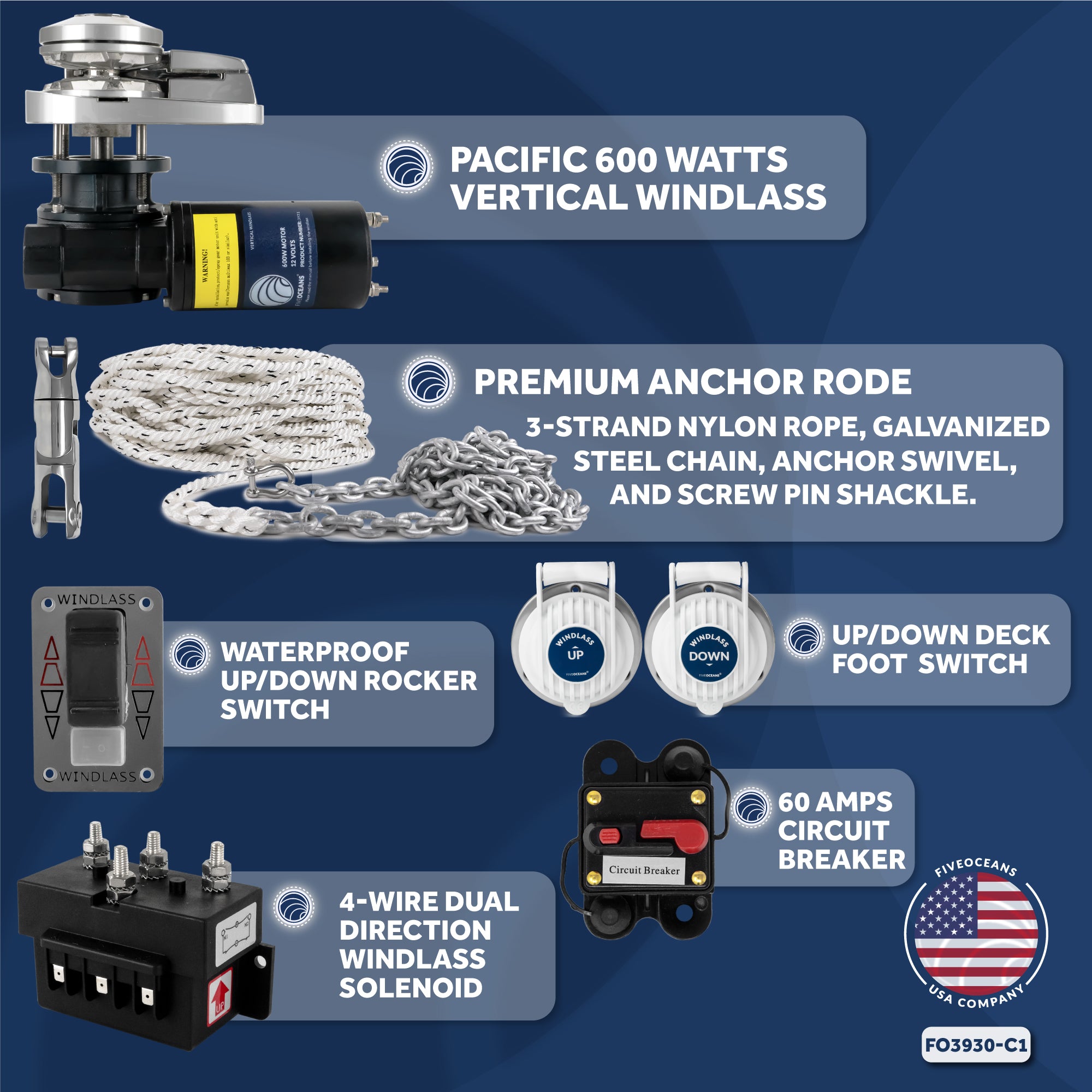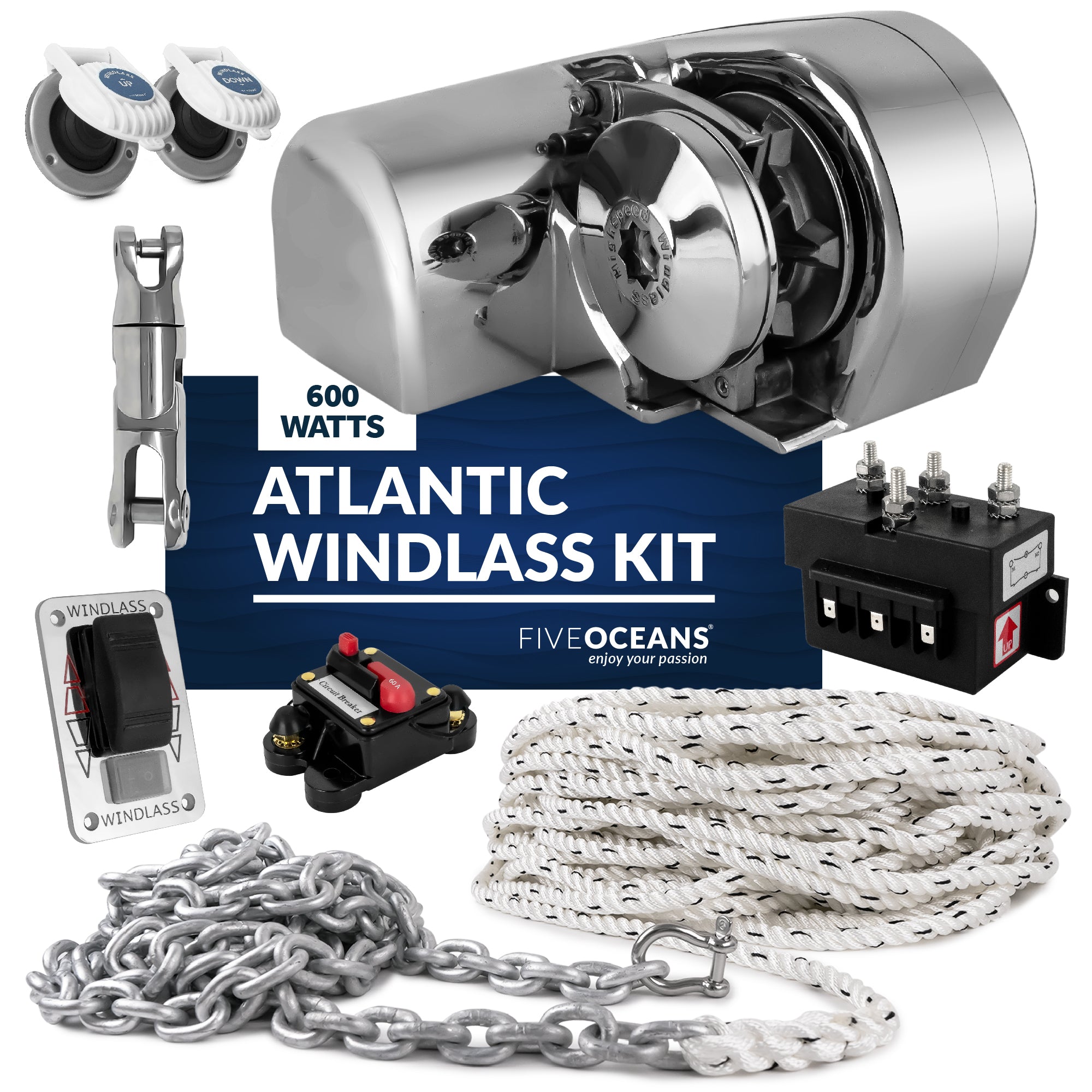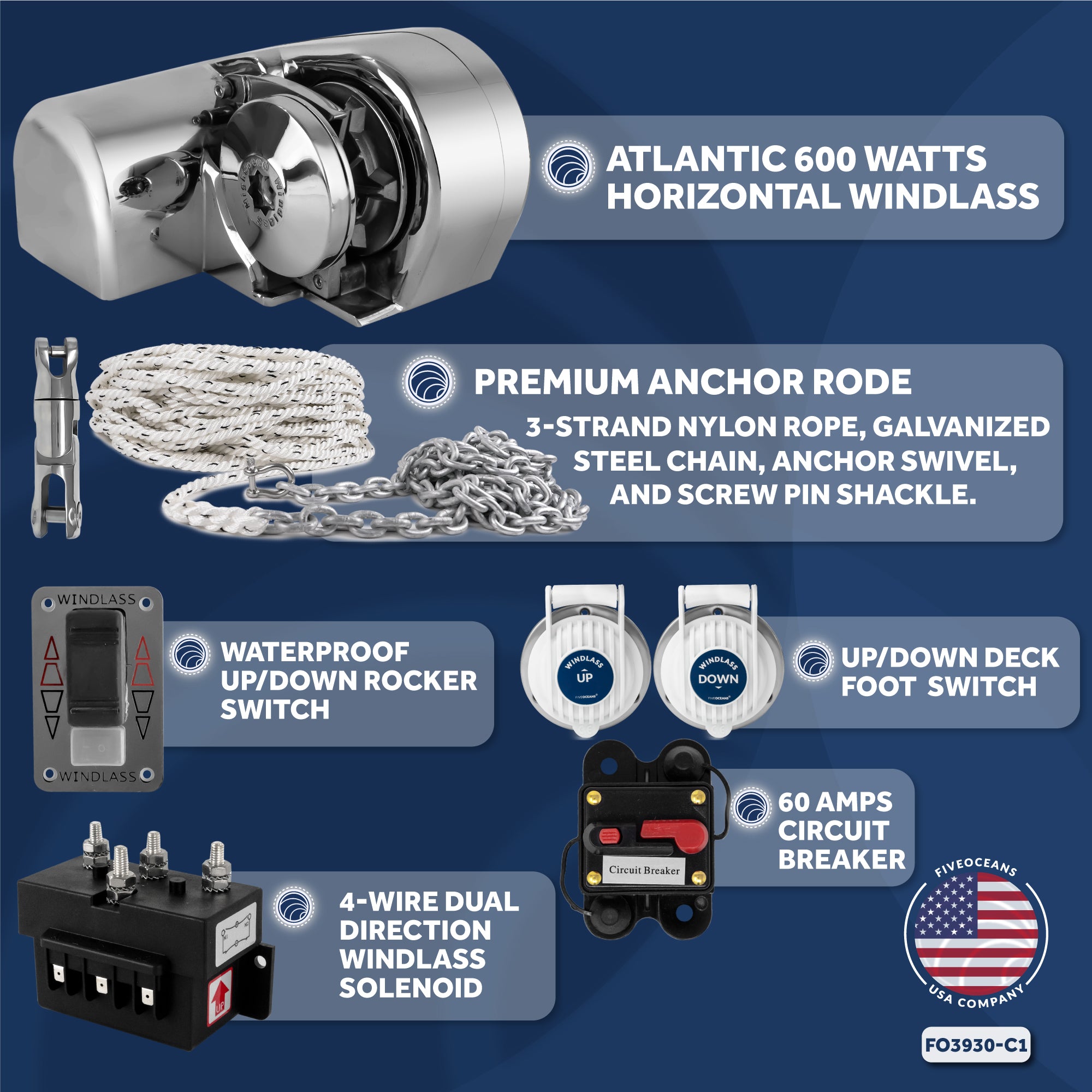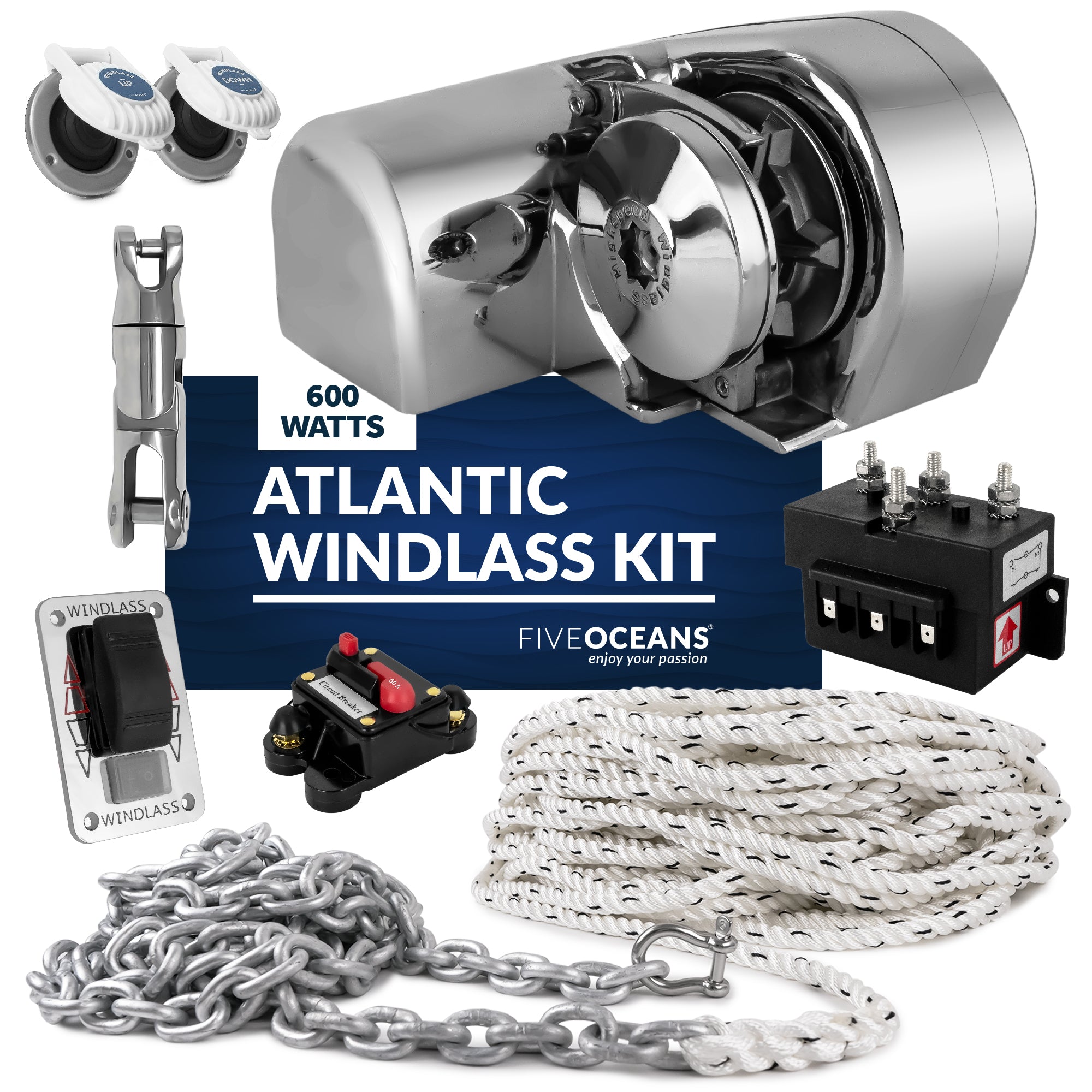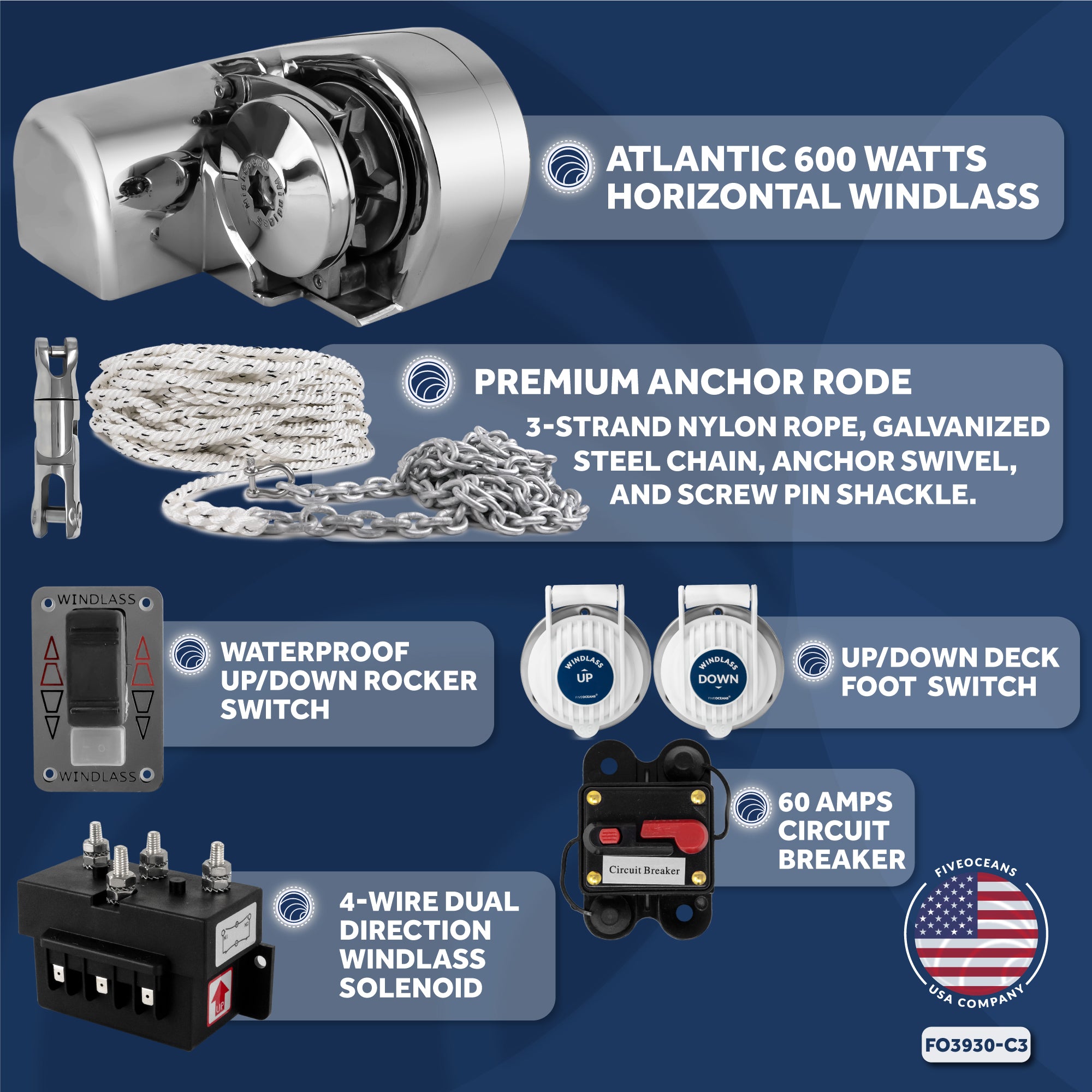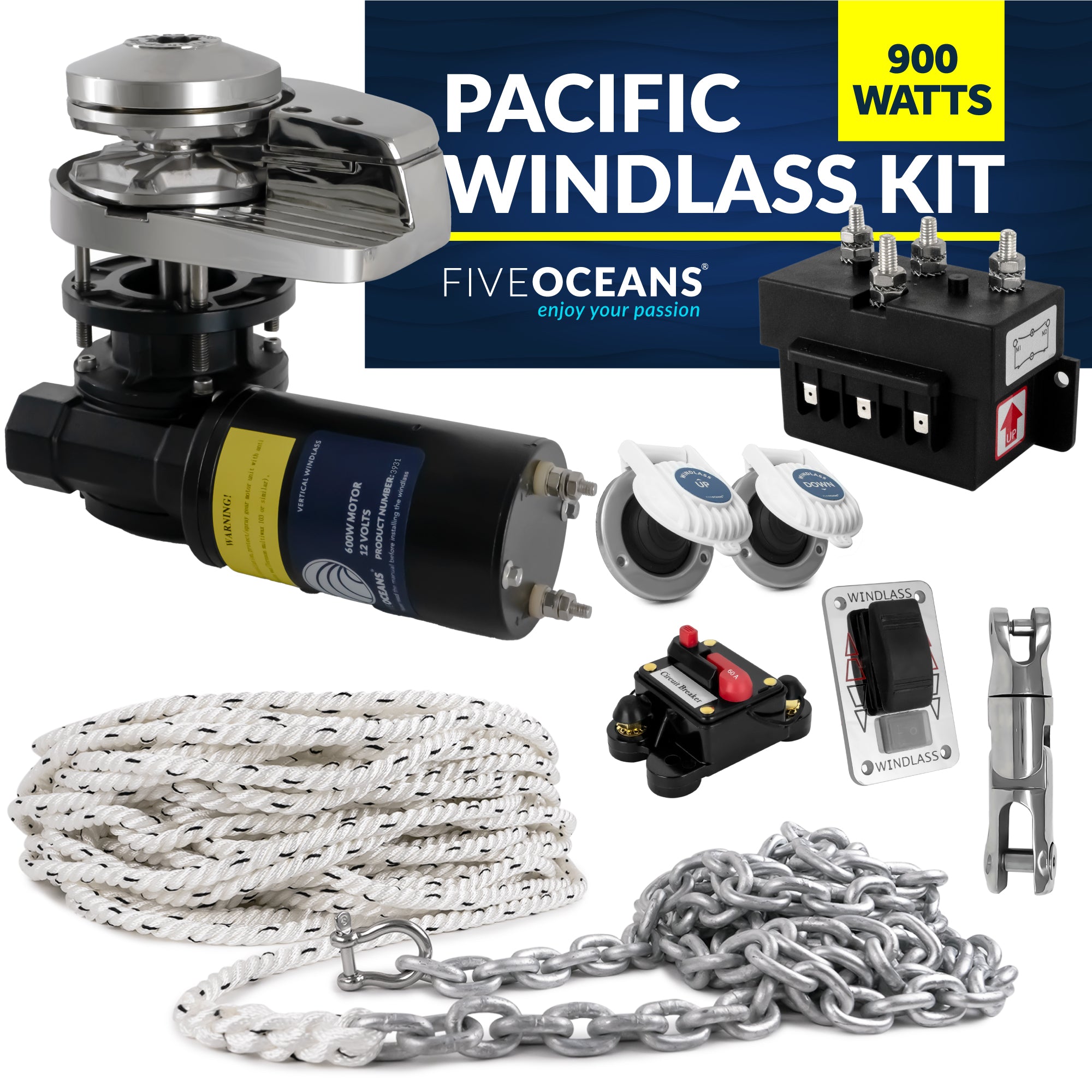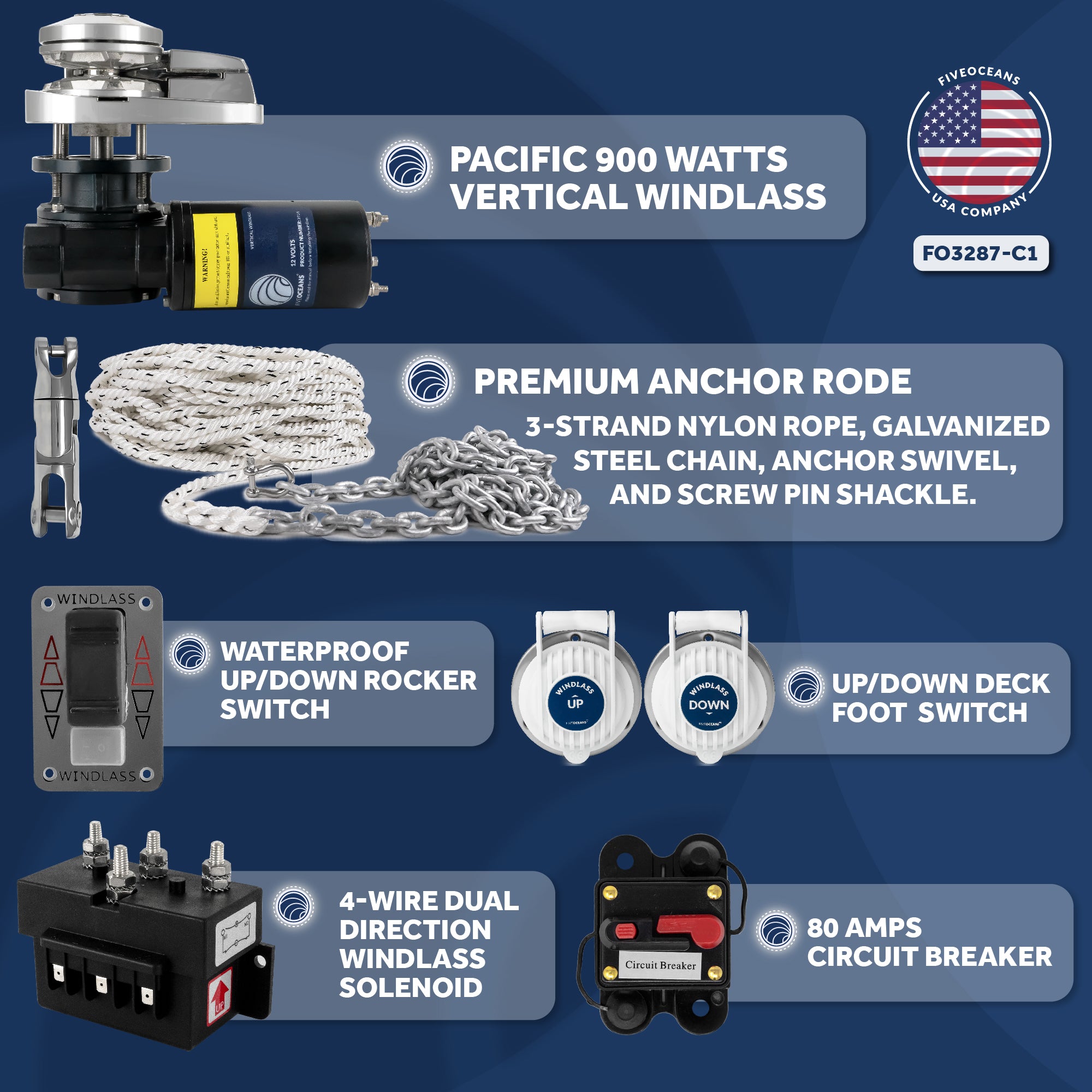This article offers insights into factors to help you navigate the process of selecting the optimal choice for your boat needs.
Electric windlasses represent the pinnacle of anchor handling for both sailboats and powerboats. They offer robust lifting capabilities, simplifying the anchoring process to a mere press of a foot switch or button. These Windlasses are usually compatible with the boat's current electrical setup, making them a convenient addition to onboard systems. Sailboats, yachts, cruisers, and commercial ships rely on windlasses to manage anchors efficiently, ensuring stability and safe docking in diverse locations.
The primary difference between vertical and horizontal windlasses lies in their orientation and the way they manage the chain or rope while anchoring a boat. The choice between a vertical and horizontal windlass often depends on the boat's size, available deck space, the type of anchor system used, and personal preference. Vertical Windlasses are more space-efficient. Consider the mounting options available on your boat. Certain windlasses may be better suited for specific mounting configurations (vertical or horizontal) based on the design and structure of your vessel.
Things to consider before you choose which one is best for you:
Orientation
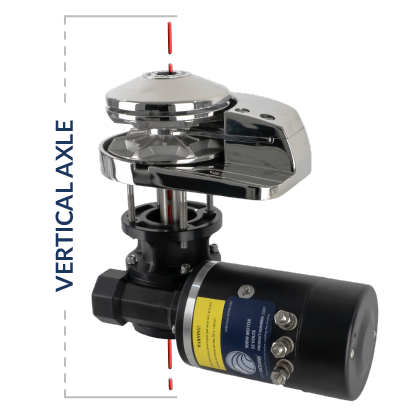
Vertical windlasses commonly handle combination rode using a single gypsy. The rode completes a full 180° wrap around the chain wheel before passing through a deck pipe, making a 90° turn as it enters the anchor locker. This design facilitates smooth and efficient retrieval and storage of the rode while securing the anchor in place.
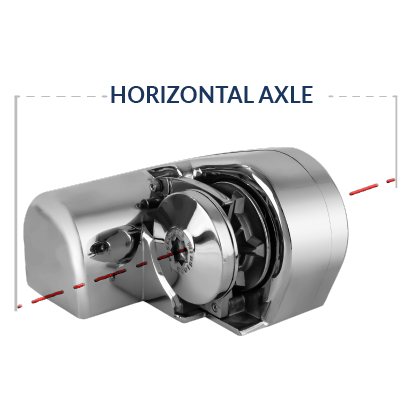
Conversely, a horizontal windlass is installed on the deck with the drum or gypsy-oriented perpendicular to the deck. The anchor rode enters the gypsy and makes a 90° turn as it feeds down into the locker.
Space and Installation
Orientation
Organize content into multiple columns to share useful information to your customers about your products, values...
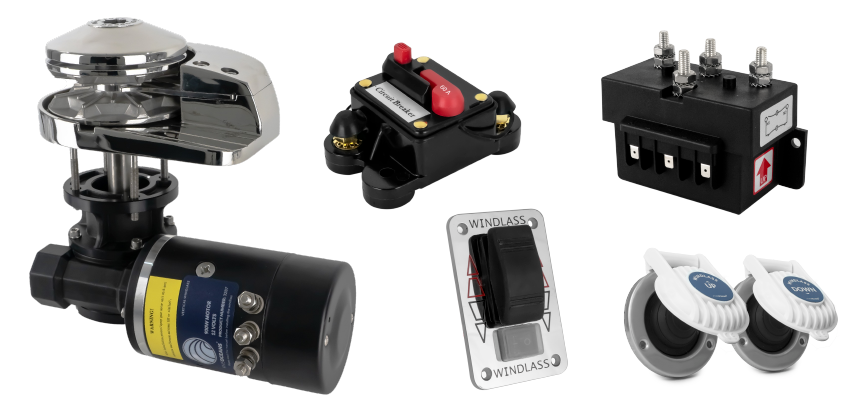
Pacific Vertical Windlass
Vertical Windlasses stand out as the favored option due to their less conspicuous appearance on the fore deck. They achieve this by housing the motor and gearbox below the deck, with the chain wheel positioned on a vertical driveshaft above the deck. This configuration minimizes the visible components, preserving the aesthetics of the deck while maintaining efficient functionality. Vertical windlasses are best suited for situations where there's ample space above the available rope drop and the windlass motor. Their installation typically necessitates a relatively sizable hole in the deck to accommodate the gearbox. Assessing sufficient clearance above and below the deck is crucial before opting for a Vertical Windlass installation.
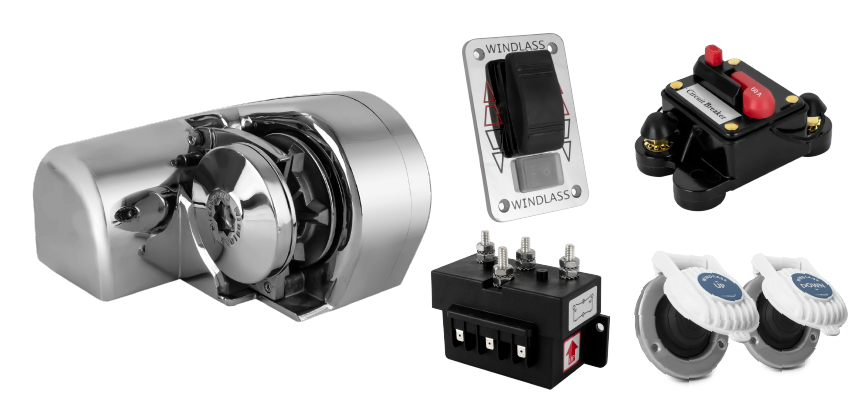
Atlantic Horizontal Windlass
Horizontal windlasses tend to take up more deck space due to their orientation. They are typically installed on the deck where space is not a limiting factor. Installation of horizontal windlasses is simpler compared to vertical counterparts, requiring only drilling holes in the deck for the chain pipe, wires, and through bolts. These models prove advantageous for boats with limited space or irregularly shaped chain lockers, often necessitating a minimum fall of just 12 inches. They offer a more straightforward installation process and can adapt well to varying locker configurations.
Performance
Both styles (Vertical and Horizontal) feature powerful options and orientation will not make a difference in performance.
At this point it is important to emphasize that Five Oceans' windlass motors are more powerful compared to similar models from other brands on the market, ensuring that power and performance are not a concern.
Five Oceans Windlass includes in their Windlass Series (Pacific Series - 600W, 900W, 1000W, and 1500W motors) for the vertical models and (Atlantic Series - 600W and 900W motors) for the horizontal models.
Types of Anchor Rode
Five Oceans Windlasses (Vertical and Horizontal Orientation) are equipped with a versatile gypsy that provides dual configuration options, accommodating both rope and chain combinations or exclusively chain usage.
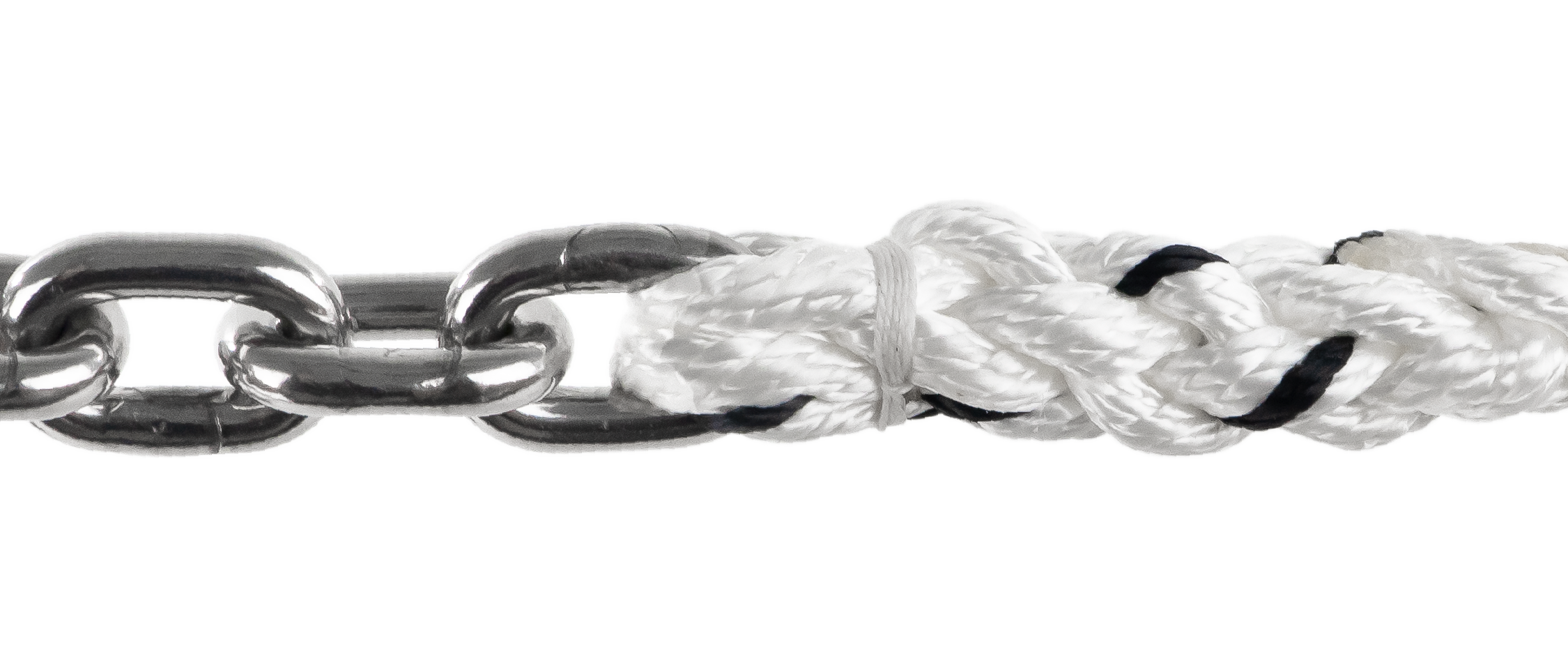
Typically, individuals opt for a Rope/Chain combination Anchor Rode. This setup often involves integrating a medium-length section of chain seamlessly spliced with a premium-quality 3-Strand Anchor Line. One notable benefit of choosing a rope/chain configuration is the weight reduction in the boat's bow, offering a distinct advantage.
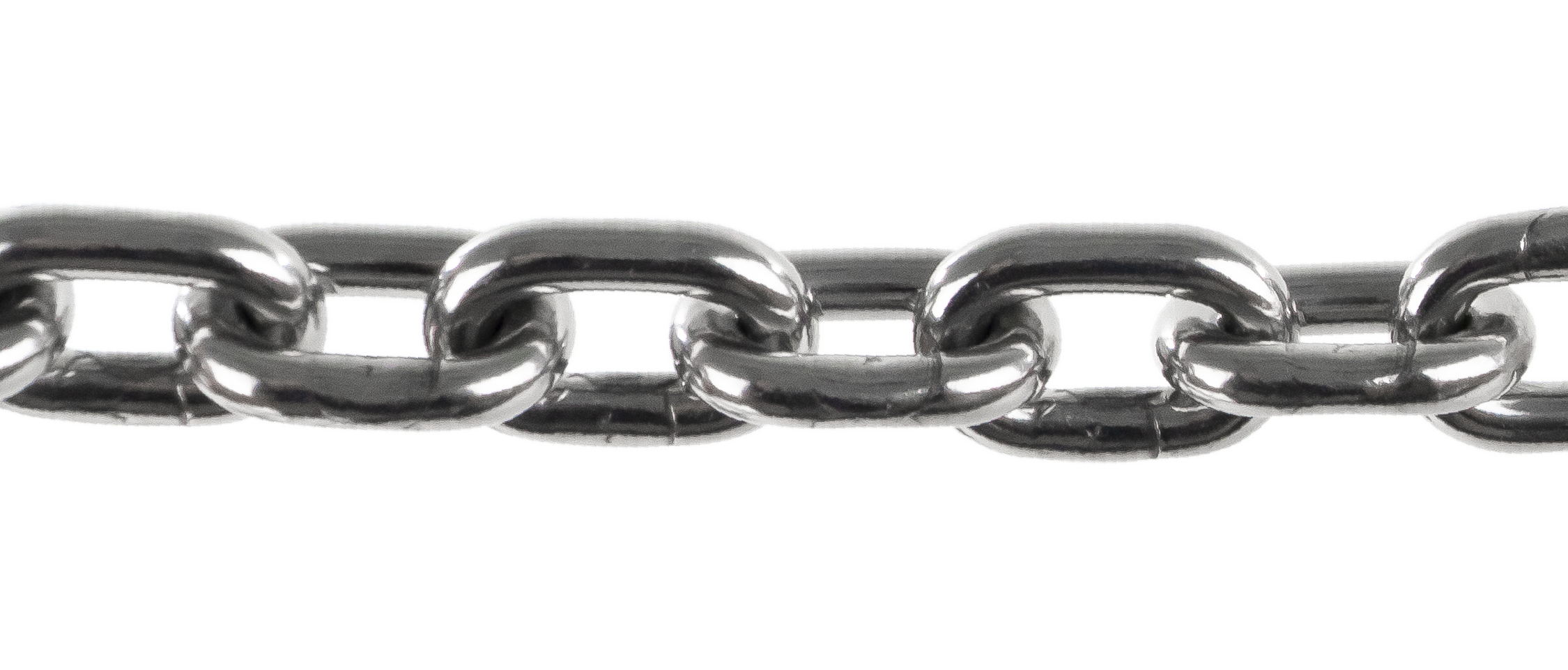
Opting for an All-Chain Rode significantly facilitates the retrieval process for all types of Windlasses. Unlike rope, the chain avoids kinking, ensuring a swifter retrieval experience. The chain effortlessly settles into the gypsy's pocket, aided by its weight, and seamlessly falls into the designated chain locker.
We trust this article proves to be a valuable resource in helping you identify the optimal onboard solution for your needs.


